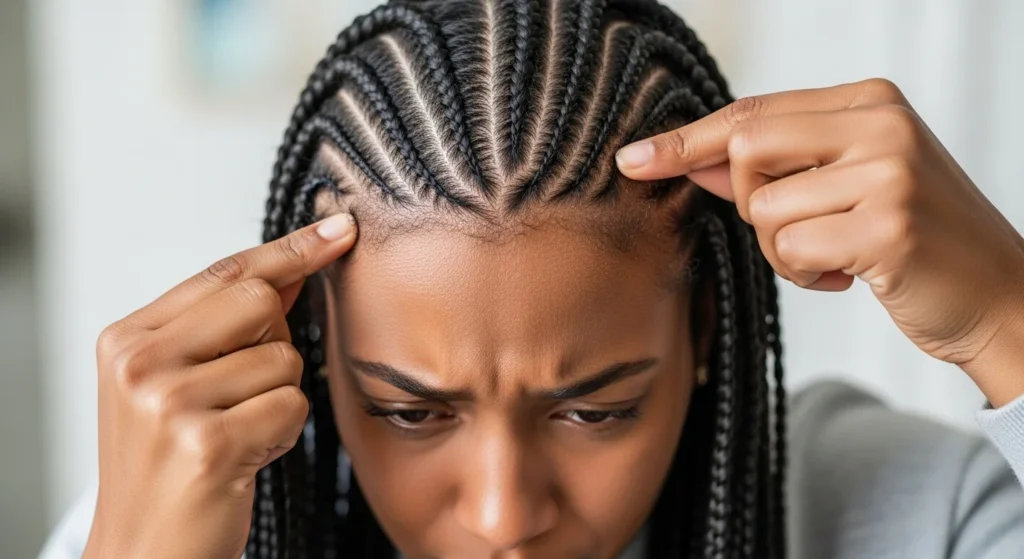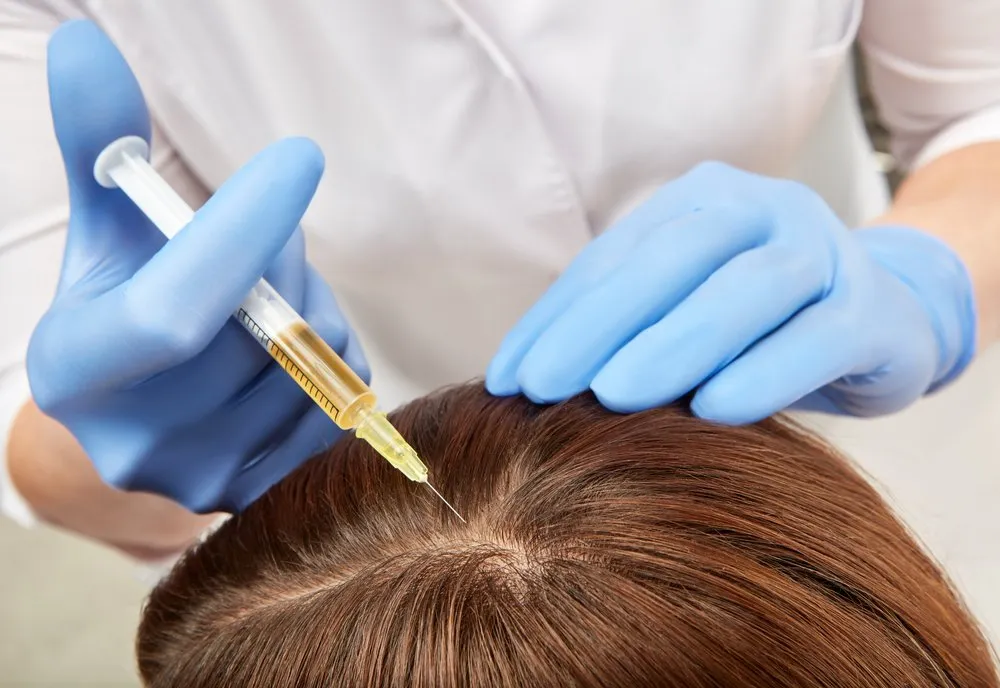Summary
Cornrows are a popular and stylish hairstyle, but wearing them too tightly or for long periods can lead to hair loss, particularly from traction alopecia. To prevent damage, it’s important to avoid tight braids, take breaks between styles, and maintain a healthy scalp care routine.
If you experience hair loss, early intervention with proper treatment can help restore hair health.
Introduction
Cornrows are a trendy and versatile hairstyle, loved for their cultural significance and aesthetic appeal. However, concerns about the possibility of hair loss from wearing cornrows have raised questions among many. If you’re wondering, can cornrows cause hair loss?
You’re not alone. In this article, we will explore whether cornrows can lead to hair loss, the science behind it, and how to protect your hair while wearing them. By the end of this post, you’ll have practical insights on how to enjoy this hairstyle without compromising your hair health.
What Are Cornrows and How Are They Styled?

Definition and Popularity of Cornrows
Cornrows are a traditional African hairstyle characterised by narrow, close-to-the-scalp braids. The braids are woven into straight lines or curved patterns, often arranged in intricate designs. Cornrows have been worn for centuries and have gained global popularity due to their sleek and low-maintenance style.
The Process of Creating Cornrows
Creating cornrows involves braiding the hair tightly against the scalp. The stylist divides the hair into small sections, braiding each into rows that lie flat against the scalp. The technique requires skill and precision, and the tightness of the braids can vary based on the desired look.
Why Are Cornrows So Popular?
Cornrows are a popular choice because they are both practical and stylish. They can last for weeks, making them ideal for those with busy schedules. They also offer a protective style, minimising the need for daily styling and reducing the risk of hair breakage. Furthermore, cornrows can be customised with various designs and accessories, making them a fashionable option for many.
Can Cornrows Cause Hair Loss?
Traction Alopecia: The Primary Cause of Hair Loss from Cornrows
One of the main risks associated with wearing cornrows is traction alopecia, a type of hair loss caused by tension on the hair follicles. When cornrows are styled too tightly, the constant pulling on the hair can damage the follicles, leading to hair breakage and thinning over time. This condition is often most noticeable along the hairline or areas where the braids are pulled tightest.
How Long Should Cornrows Be Worn to Prevent Hair Loss?
Wearing cornrows for extended periods can increase the risk of developing traction alopecia. It’s recommended to keep cornrows in for no longer than 6-8 weeks. Allow your scalp to rest between styles to prevent unnecessary tension on your hair and give your follicles time to recover.
Risk Factors for Hair Loss from Cornrows
The Importance of Hair and Scalp Health
Your natural hair type and scalp health play a significant role in how well your hair can tolerate cornrows. For individuals with weaker hair, the tension from tight cornrows can cause more noticeable damage. Those with sensitive scalps may experience irritation or inflammation, further increasing the likelihood of hair loss.
Tightness and Duration: Key Factors in Hair Damage
The tighter the cornrows, the higher the risk of hair loss. Over-tightening the braids causes excessive pulling on the hair follicles, which weakens them over time. Keeping the braids in for too long, combined with tightness, can lead to permanent damage to the follicles, causing irreversible hair loss.
Other Contributing Factors (e.g., Hair Care Products, Genetics)
In addition to tight braids and long wear times, the use of harsh hair products can exacerbate hair loss. Products that contain chemicals like sulfates or alcohol can dry out the scalp and hair, making it more prone to breakage. Genetics also plays a role; individuals with a family history of hair loss may be more susceptible to traction alopecia when wearing styles that apply constant tension to the hair.
How to Prevent Hair Loss When Wearing Cornrows
Tips for Maintaining Healthy Hair and Scalp
To protect your hair while wearing cornrows, it’s crucial to maintain a healthy hair care routine. Use moisturising hair products to keep both your hair and scalp hydrated. Consider using a gentle shampoo and conditioner free of sulfates to prevent dryness and breakage. Additionally, treating your scalp with oils like coconut oil or castor oil can nourish your hair follicles and promote healthy growth.
How to Avoid Over-tightening Cornrows
When getting cornrows, ensure that the braids are not too tight. A skilled stylist should be able to create tight, neat braids without causing tension on the scalp. Avoid telling your stylist to make the braids extra tight. If you feel any discomfort or tension during or after the braiding process, let your stylist know immediately. You can also check for redness or soreness on your scalp as signs that the braids may be too tight.
Best Practices for Wearing Cornrows Safely
- Take breaks: Give your scalp time to rest by alternating between braiding styles.
- Loose Braids: Opt for looser braids to reduce tension on your hair follicles.
- Avoid Excessive Tension: Ensure that the cornrows are only as tight as necessary to keep them in place.
What to Do If You Experience Hair Loss from Cornrows
Early Signs of Traction Alopecia
The early signs of traction alopecia include a thinning hairline, scalp soreness, and the appearance of broken or short hairs along the hairline or other braided areas. If you notice these signs, it’s essential to stop wearing tight hairstyles immediately and seek professional advice.
How to Treat Traction Alopecia
If you are experiencing hair loss due to traction alopecia, there are several treatment options available. Minoxidil, an over-the-counter topical treatment, can help stimulate hair growth. For more severe cases, you may need to consult with a dermatologist for prescribed treatments or even consider hair restoration options like PRP (Platelet-Rich Plasma) therapy.

When to Seek Medical Help
If the hair loss continues despite stopping tight hairstyles or if you experience significant thinning, it’s essential to consult a dermatologist. A professional can provide a proper diagnosis and recommend treatments to help restore your hair.
FAQs About Cornrows and Hair Loss
Can I Wear Cornrows Every Week?
It’s not recommended to wear cornrows every week, especially if they are done tightly. Give your scalp time to rest and recover between styles to prevent long-term damage.
How Tight Should My Cornrows Be?
Cornrows should be firm enough to stay in place but not so tight that they cause pain or discomfort. If you feel soreness during or after styling, the braids may be too tight.
Are There Any Alternative Styles to Cornrows for Healthy Hair?
Yes, there are many protective styles like loose braids, twists, or buns that can give your hair a break from tension and still look stylish.
How Do I Know If I Have Traction Alopecia?
Signs include thinning hair, a receding hairline, and breakage around the braided areas. If you notice any of these, it’s time to give your hair a break and seek professional advice.
Conclusion
Cornrows are a beautiful and convenient style, but it’s essential to wear them safely to avoid hair loss. By following best practices like avoiding tightness, alternating with other styles, and maintaining a healthy hair care routine, you can enjoy your cornrows without compromising your hair health.
If you’re experiencing hair loss or discomfort, it’s vital to seek professional advice early. Book a consultation today to ensure the health of your hair and get personalised recommendations for your hair care needs.
